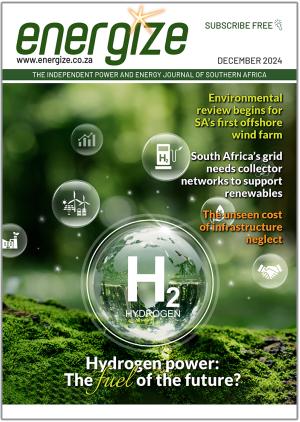Diversifying South Africa’s energy mix is no longer optional for the country's energy-intensive commercial and industrial sectors – it is a necessity. Balancing legacy power sources like coal and diesel with renewables – such as solar, wind, nuclear and hydropower – is the only viable solution to sustain operations and meet environmental targets.
This was the collective view of a panel discussion held at the C&I Solar & Storage Summit at The Maslow Hotel in Sandton on November 20.
Energy-intensive sectors such as mining, manufacturing and industrial production are under mounting pressure to optimise their energy mix over the next decade. “South Africa’s energy landscape is at a critical juncture. With growing environmental pressures, regulatory requirements, supply challenges and escalating energy costs, optimising the energy mix has become a strategic priority and this involves diversifying beyond coal dependency to include cleaner, cost-effective and resilient energy sources such as renewables, natural gas, nuclear and energy storage solutions,” said Warrick Pierce, Engineer at Stellenbosch University’s Centre for Renewable and Sustainable Energy Studies.
This transition offers energy-intensive users opportunities for operational stability and cost management and contributes to South Africa’s broader goals of reducing carbon emissions and enhancing energy security. However a transition brings its own set of challenges, Pierce said. “A very complex set of problems faces all those involved, especially as large-scale users must balance immediate energy demands with long-term sustainability goals.”
Efficiency lies at the heart of optimising South Africa’s energy mix. “In engineering terms, optimisation means making whatever we have more effective and efficient. This makes energy-intensive users resilient while they benefit from affordable energy,” said Rethabile Melamu, CEO of the South African Photovoltaic Industry Association. “This starts with deciding which energy sources will work best for specific applications and determining how to mix them effectively to meet unique needs.”
Procurement strategies and models
The next decade will demand careful planning to address factors such as base load reliability and coal decommissioning. Regulatory and policy support, alongside technological advancements in generation and storage, will influence procurement strategies for energy-intensive users, said Craig Morkel, Chairperson of the Gas Economy Leadership Team at the South African Oil and Gas Alliance.
Guiding energy users through this transition will be critical, added Pierce. “The big question is how energy-intensive users can transition from a system where 80% of energy comes from coal to a more variable renewable-based model. This involves comparing the costs of coal versus renewables, mapping the transition's financial impacts and addressing the inefficiencies of the current system to build a greener, more effective one.”
Industries must also consider the country's social needs, said Morkel. “We require an energy mix that minimises environmental impact while addressing social interests. It is essential to analyse all generation technologies carefully to determine the best mix for the country's future.”
This balance includes prioritising energy security, affordability, quality and decarbonisation. “The biggest problem facing the continent today is energy access, followed by accessibility and affordability. As we seek an optimal mix for South Africa, we must address these key issues without allowing other national imperatives to take precedence,” said Niveshen Govender, CEO of The South Africa Wind Energy Association.
Factors that will influence procurement strategies for energy-intensive users in the next decade include base load reliability coal decommissioning, said Morkel. “Regulatory and policy support for a balanced energy mix and technological advancement in energy generation and storage will play a role in procurement for these users.”















